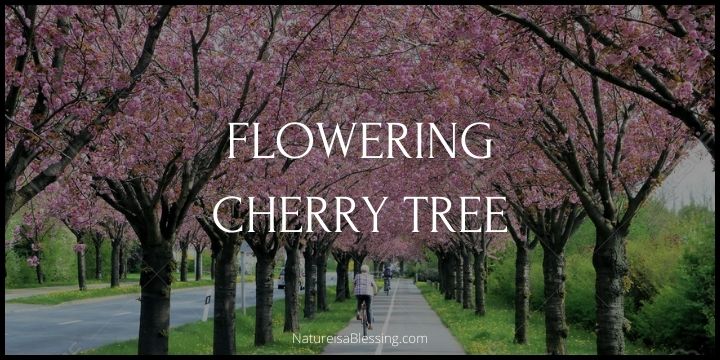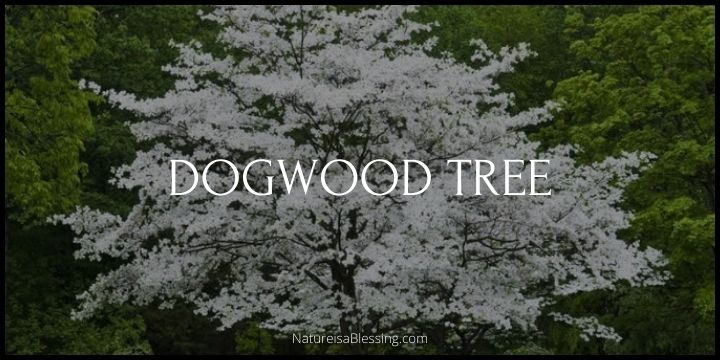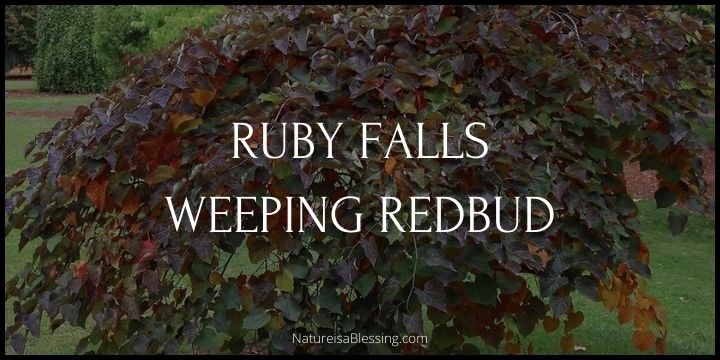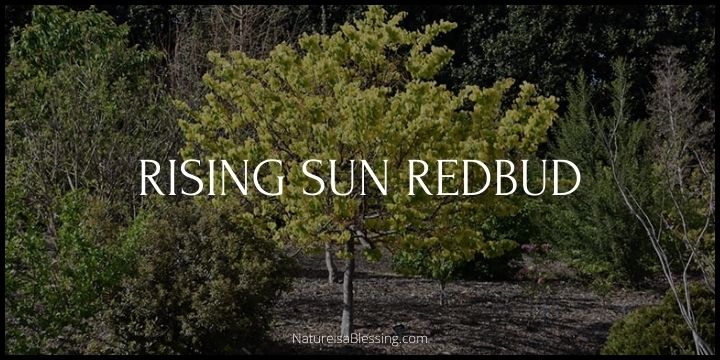Eastern Redbud Tree: How to Plant, Grow & Care
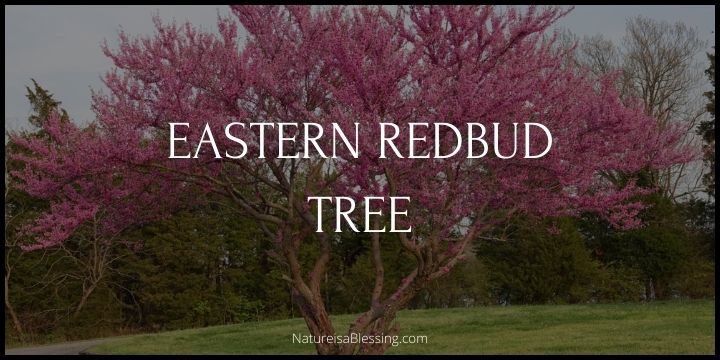
What is a Redbud Tree?
The Redbud Tree, also known as Cercis Canadensis, is a deciduous tree that is native to eastern North America. It is part of the Fabaceae, or legume, family. This tree is well-known for its beautiful display of pink-purple flowers in the spring.
The Redbud Tree is among the first trees to bloom in spring. Its small, magenta buds blossom into pink or lavender flowers even before the leaves appear, signaling the arrival of spring.
The tree’s leaves are heart-shaped and offer their own visual appeal. They are a rich green color in the summer and turn yellow in the fall, adding another layer of interest throughout the seasons.
A mature Redbud Tree can reach heights of 20-30 feet and widths of 25-35 feet. The tree grows best in full sun to part shade and can adapt to various soil types, although it prefers well-drained soil with a neutral to slightly acidic pH.
In addition to their ornamental value, Redbud Trees also provide benefits for local wildlife. The flowers attract bees and butterflies, serving as an early source of nectar. Following the blooming period, seed pods develop which serve as food for birds and small mammals.
Redbud Trees require low maintenance, usually needing only occasional pruning to maintain their shape. They have moderate drought tolerance once established.
These trees are often used in urban gardens due to their compact size and stunning display of flowers. They can be used as a standalone feature, in a group, or as a street or patio tree. They are hardy in USDA zones 4-9.
The truth is, the Redbud Tree is a striking and resilient tree that offers year-round interest, making it a fantastic addition to any landscape.
Fast Facts About Eastern Redbud Tree
| Attribute | Description |
|---|---|
| Common Name | Eastern Redbud |
| Botanical Name | Cercis Canadensis |
| Family | Fabaceae (legume family) |
| Plant Type | Deciduous tree |
| Genus | Cercis |
| Mature Height | 20-30 feet |
| Mature Width | 25-35 feet |
| Sun Exposure | Full sun to part shade |
| Soil Type | Adaptable to various soil types, prefers well-drained soils |
| Soil pH | Prefers neutral to slightly acidic soil (pH 6.0 to 7.5) |
| Soil Drainage | Requires well-draining soil |
| Bloom Time | Early spring (March-April) |
| Attracts | Bees and butterflies |
| Maintenance | Low maintenance; requires pruning to maintain shape |
| Water Needs | Moderate; more in extreme heat |
| Native Area | Eastern North America |
| Drought Tolerance | Moderate drought tolerance once established |
| Characteristics | Known for its pink-purple flowers that bloom before the leaves appear in spring. Has heart-shaped leaves that turn yellow in fall. |
| Suggested Use | Ornamental tree for lawns and gardens, street or patio tree |
| USDA Hardiness Zone | 4-9 |
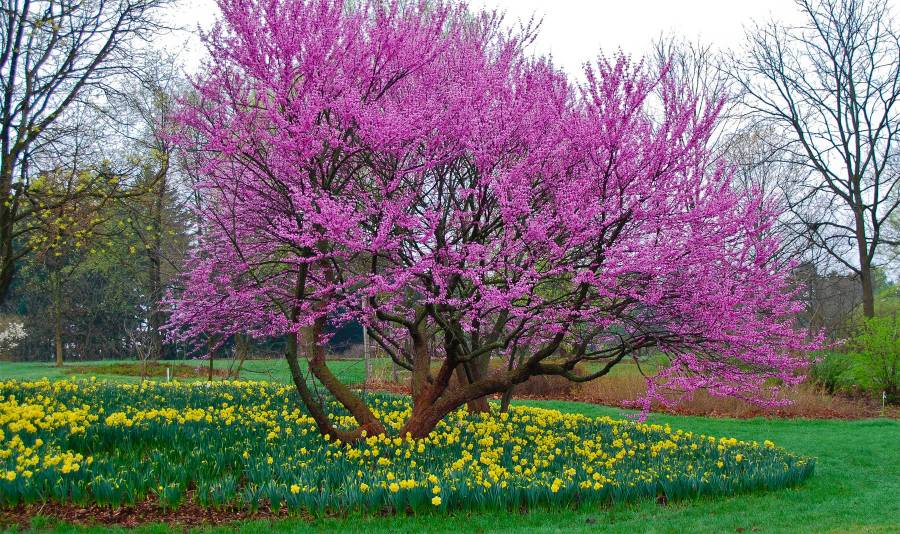
How to Plant and Care for Redbud Tree
Where do Redbud Trees grow best?
Redbud Trees grow best in conditions that offer full sun to partial shade, ideally receiving at least 6-8 hours of direct sunlight each day. They can adapt to a variety of soil types, but they prefer well-drained soil. They have the ability to thrive in sites with varying moisture levels from dry to moist and can also do well in sandy soils.
Once established, Redbud Trees are quite drought-tolerant, reducing the need for frequent watering. However, they do not do well in areas with standing water. Despite their adaptability, they flourish when grown in a moist, well-drained location.
In terms of physical location, because of their modest size, Redbuds can be planted in urban gardens, as standalone features, in groups, or as street or patio trees. They are hardy and can grow in USDA zones 4-9.
Note: while they can grow in partial shade, Redbud Trees tend to have a more elongated shape as they reach more for the sun in these conditions. Full sun exposure typically encourages optimal flowering.
Preparing the Site
- Choosing the right location: Redbud trees need space to grow, so choose a location that can accommodate a mature size of 20-30 feet tall and 25-35 feet wide. The site should receive full sun to partial shade.
- Removing weeds and debris: Clear the site of any weeds, grass, or other debris that could compete with the tree for nutrients and water.
- Determining the correct soil drainage: Dig a hole about 1 foot deep and fill it with water. If the water drains within an hour, the site has good drainage. If not, consider choosing another location or improving the drainage.
Planting the Redbud Tree
- Digging the hole: The hole should be twice as wide and just as deep as the root ball of the tree.
- Placing the tree: Position the tree in the center of the hole, ensuring the top of the root ball is level with the ground surface.
- Backfilling the hole: Fill the hole halfway with soil, then water thoroughly to settle the soil and eliminate air pockets. Once the water has drained, fill in the rest of the hole.
- Watering: After planting, water the tree thoroughly and mulch around the base to conserve moisture and suppress weeds.
Caring for the Redbud Tree
- Watering routine: In the first year, water the tree deeply once a week, unless rainfall is adequate. Afterward, water during dry spells or periods of drought.
- Mulch Around the Base: Apply a layer of mulch around the base of the tree. This will help conserve moisture, suppress weeds, and maintain soil temperature.
- Fertilizing: Apply an organic fertilizer in late winter or early spring to promote growth and flowering. Always follow the manufacturer’s instructions.
- Pruning: Prune the redbud tree in late fall or winter while it’s dormant. Remove dead, diseased, or crossing branches to maintain the tree’s shape and health.
Potential Hazards
- Pests: Certain pests can cause damage to Redbud trees.
- Caterpillars: These can defoliate the tree but are usually not a serious problem.
- Tree borers: These insects can bore into the trunk of the tree causing significant damage.
- Scales: These small insects attach themselves to the tree and suck sap from it.
- Diseases: Redbud trees can be susceptible to several diseases:
- Verticillium Wilt: This soil-borne fungus causes wilting and death of branches. Infected trees should be removed to prevent the spread of the fungus.
- Canker: This disease causes sunken, dead areas on the bark. It can lead to branch dieback and can eventually kill the tree.
- Leaf Spot: This fungal disease causes dark spots on the leaves. It can be controlled with fungicides and by removing and disposing of infected leaves.
- Weather Conditions: Extreme weather conditions can pose a threat to the health of a Redbud tree.
- Drought: Although redbuds are somewhat drought-tolerant once established, prolonged periods of dry conditions can stress the tree, making it more susceptible to pests and diseases.
- Cold: Redbud trees can suffer from frost crack, a type of injury caused by freezing temperatures. The bark splits vertically, and while it’s not usually life-threatening, it can weaken the tree.
- Improper Planting: Planting the tree too deeply or not watering it enough after planting can stress the tree and lead to its decline.
- Poor Drainage: Redbuds prefer well-drained soils and can develop root rot if the soil is waterlogged.
Watch out for pests like caterpillars and diseases such as canker, leaf spot, and verticillium wilt. If you notice wilting, yellowing leaves, or dieback, consult with a local extension service or professional arborist for advice.
Remember, weather conditions can significantly impact the planting and growth of the tree. In colder USDA zones (4-5), protect the young tree with a winter wrap. In hotter zones (8-9), ensure the tree receives adequate water, especially during dry periods.
With proper care and attention, your Redbud tree will provide a beautiful display of flowers each spring and add year-round interest to your landscape.
What is the story behind the Redbud Tree?
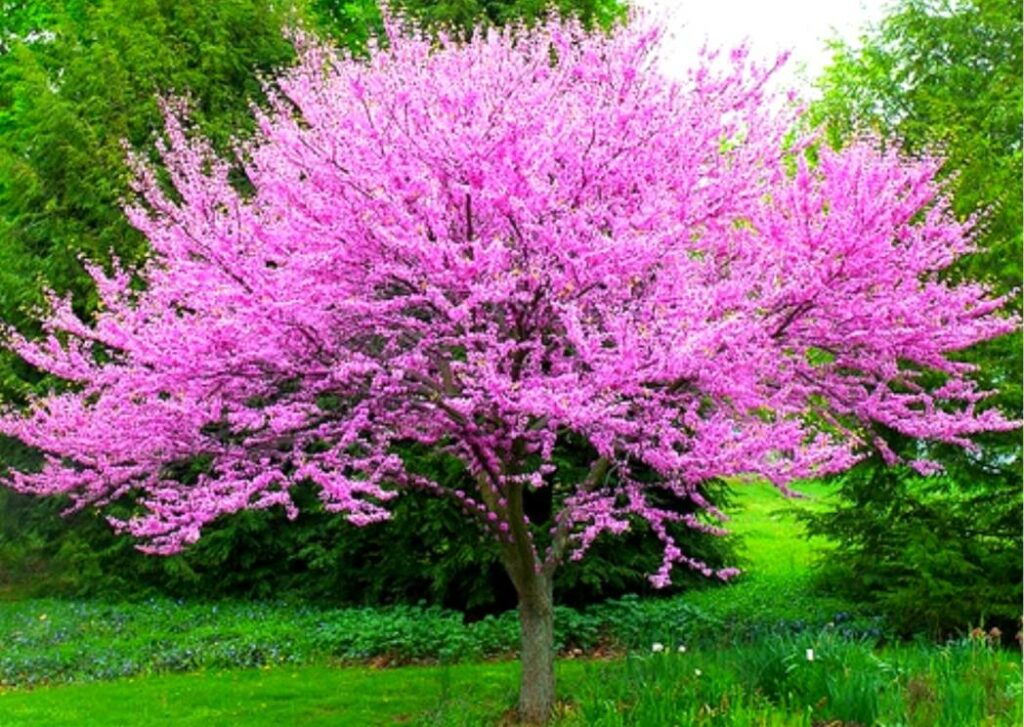
The Redbud Tree, specifically the Eastern Redbud (Cercis canadensis), has a fascinating story that intertwines natural history and legend.
Natural History:
The Eastern Redbud is native to the eastern woodlands from New Jersey to northern Florida and westward to the Great Plains. It’s a medium-sized tree that can grow up to 35 feet tall. The tree is known for its stunning display of purple-pink, clustered blossoms that appear in early spring before the leaves emerge. The Redbud is part of the Leguminosae family, which also includes peas and beans, and it produces flat, bean-like seed pods.
Name Origin:
The American tree has been referred to as the redbud since at least 1700. This name likely comes from the color of the tree’s buds in early spring, which are often a reddish-purple color.
The Legend of the Judas Tree:
There is a legend that the Redbud was originally a tall, strong tree with white flowers. However, the tree became associated with the biblical figure Judas Iscariot. In one version of the story, it’s said that Judas hanged himself from a Redbud tree, and the tree’s blossoms turned red either from shame or from Judas’s blood. In another version, the tree was called the Judas tree because it betrayed settlers by providing only a dried bean and no fruit.
Cultural Significance:
Despite its controversial history, the Redbud tree is appreciated for its beauty and is sometimes proposed as a candidate for the national tree. In Oklahoma, for example, the Redbud is highly valued and is even the state tree.
Why is a Redbud Tree called a Judas tree?
The Redbud Tree, specifically the Eastern Redbud (Cercis canadensis), is sometimes referred to as the Judas Tree. This name has its roots in biblical history and legend.
According to Christian tradition, after betraying Jesus Christ, Judas Iscariot was filled with such remorse that he hanged himself from a tree. The tree, originally bearing white flowers, is said to have blushed with shame or been stained by Judas’s blood, and its blossoms turned a deep pink or reddish color. It’s this tree that became known as the Judas Tree.
It’s worth noting that the tree Judas is believed to have hanged himself from is often associated with another species, Cercis siliquastrum, native to the Mediterranean region. However, because of the similar appearance and characteristics of the Eastern Redbud, including its pink blossoms, it has also come to be known as a Judas Tree.
The name “Cercis” for the genus of Redbuds comes from the Greek word “kerkis,” which means weaver’s shuttle, referring to the shape and size of the seed pod of these trees.
What Does a Redbud Tree Symbolize?
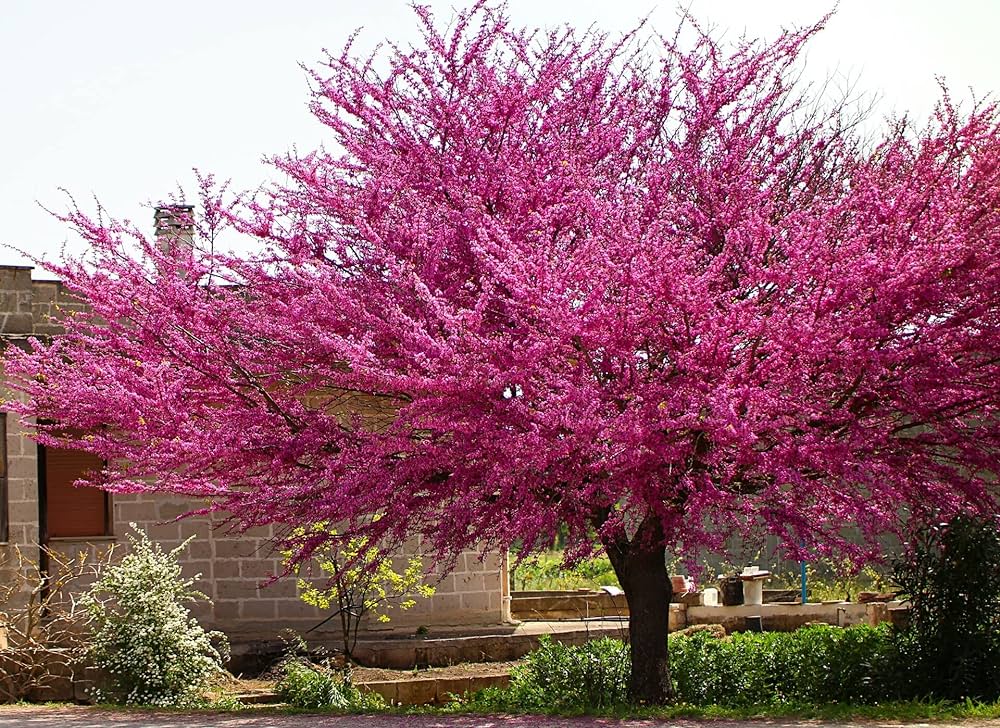
| Symbolism | Explanation |
|---|---|
| New Beginnings | The Redbud tree is one of the first trees to bloom in the spring, symbolizing new beginnings and the promise of things to come. |
| Love and Faithfulness | In Christian symbolism, despite its association with Judas, the Redbud tree is often seen as a symbol of love and faithfulness due to its heart-shaped leaves. |
| Resurrection | Its spring blossoms also symbolize resurrection and renewal, coinciding with Easter in the Christian calendar. |
| Hope and Renewal | In Native American lore, the Redbud tree is a symbol of hope and renewal. It’s believed that the tree brings good fortune and its blossoms are used in traditional medicine. |
| Survival and Adaptability | The Redbud tree’s ability to grow in various conditions, including drought and poor soil, symbolizes survival and adaptability. |
What Are The Different Types of Redbud Tree?
| Tree Type | Description |
|---|---|
| Eastern Redbud (Cercis canadensis) | This is the most common type of Redbud tree. It grows up to 30 feet tall and wide with heart-shaped leaves. It produces vibrant pink-purple flowers in early spring. |
| Western Redbud (Cercis occidentalis) | Native to California and the southwestern United States, this species grows up to 15 feet tall, with magenta flowers and blue-green leaves. |
| Texas Redbud (Cercis canadensis var. texensis) | This variant is smaller and more drought-tolerant than the Eastern Redbud. It has glossy, thick leaves and bright pink flowers. |
| Oklahoma Redbud (Cercis reniformis ‘Oklahoma’) | This variant of the Texas Redbud has glossy, dark green leaves and clusters of deep pink flowers. It’s the state tree of Oklahoma. |
| Forest Pansy Redbud (Cercis canadensis ‘Forest Pansy’) | This cultivar has purple leaves that turn to a dark green as they mature. It produces pink flowers in the spring. |
| Rising Sun Redbud (Cercis canadensis ‘The Rising Sun’) | This variety is known for its stunning leaf color, which starts as apricot, then turns to yellow, and finally to a speckled lime green. |
| Lavender Twist Weeping Redbud (Cercis canadensis ‘Covey’) | This is a dwarf variety with a unique weeping habit. Its branches cascade down like a waterfall, covered in lavender-pink flowers in the spring. |
| Ruby Falls Weeping Redbud (Cercis canadensis ‘Ruby Falls’) | A compact, deciduous tree characterized by its cascading branches adorned with heart-shaped leaves and vibrant lavender-red blooms in the spring. |
The Pros and Cons of Growing a Redbud Tree
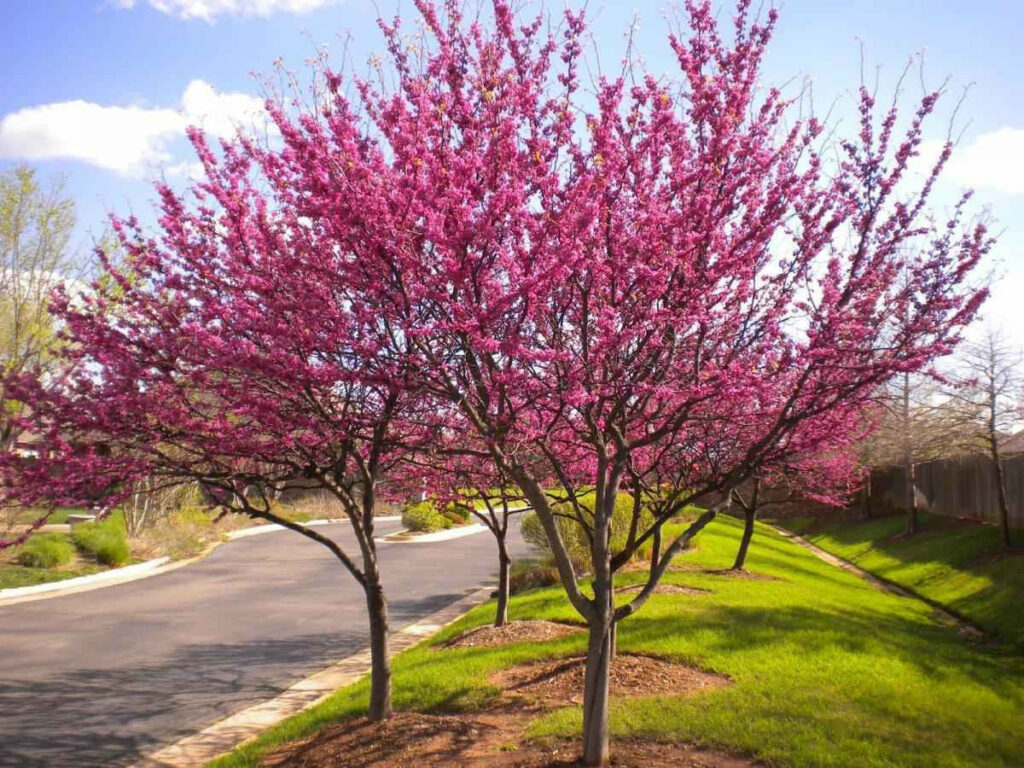
Advantages:
- Attractive Appearance: Redbud trees are known for their vibrant pink-purple blossoms that appear in early spring, offering a beautiful display. Their heart-shaped leaves also add to their aesthetic appeal.
- Variety: There are various cultivars of redbud trees available, offering a range of sizes, flower colors, and leaf colors.
- Pollinator Friendly: The flowers of the redbud tree attract bees, butterflies, and other pollinators, which can enhance the biodiversity of your garden.
- Adaptable: Redbud trees can tolerate a wide range of soil types and conditions, including poor soils and urban pollution.
- Native Species: Planting native species like the Eastern Redbud can contribute to local ecosystems.
Disadvantages:
- Short Lifespan: Redbud trees have a relatively short lifespan compared to other trees, typically only living 20 to 25 years.
- Disease Susceptibility: Redbuds are susceptible to several diseases, including canker disease and verticillium wilt, which can cause branches to die.
- Prone to Pests: Redbud trees can be affected by pests like the redbud leaffolder, the redbud leaf roller, and scale insects.
- Care Requirements: They require regular watering, especially during dry periods, and may need pruning to maintain their shape or remove dead branches.
- Size: Some varieties can grow quite large, which might not be suitable for smaller gardens or landscapes.
7 Best Redbud Tree Alternatives
| Tree | Description |
|---|---|
| Dogwood (Cornus) | Dogwoods are similar in size to redbuds and also bloom in early spring with vibrant flowers. They’re a great alternative for adding spring color to your landscape. |
| Serviceberry (Amelanchier) | Serviceberries offer four-season interest with spring flowers, summer berries, fall color, and winter bark. They’re native to North America like redbuds and attract wildlife. |
| Magnolia (Magnolia) | Magnolias are known for their large, fragrant blossoms that appear in early spring. Some smaller varieties would be similar in size to redbuds. |
| Cherry (Prunus) | Cherry trees, especially the ornamental varieties, have stunning spring blossoms. Some, like the Yoshino cherry, are around the same size as redbuds. |
| Crabapple (Malus) | Crabapples are roughly the same size as redbuds and have beautiful spring blossoms. They also produce fruit that attracts wildlife. |
| Hawthorn (Crataegus) | Hawthorns are small, hardy trees that produce beautiful clusters of flowers in the spring and berries in the fall, offering year-round interest. |
| Witch Hazel (Hamamelis) | Witch hazels are small trees or large shrubs that bloom in late winter to early spring, often while snow is still on the ground. They would provide a different bloom time compared to redbuds. |
Redbud vs. Dogwood: Which is Better?
Choosing between a Redbud and a Dogwood tree depends on your personal preference and the specific requirements of your landscape. Both are attractive, native trees that offer beautiful spring blossoms and have their unique characteristics.
Here’s a comparison to help you decide:
| Feature | Redbud Tree | Dogwood Tree |
|---|---|---|
| Height | Typically grows up to 20-30 feet. | Typically grows up to 15-30 feet. |
| Flower Color | Produces vibrant pink-purple flowers in early spring. | Known for stunning white or pink flowers that bloom in spring. |
| Leaf Color | Green leaves that turn yellow in fall. | Green leaves that turn red-purple in fall. |
| Soil Tolerance | Can tolerate a wide variety of soil conditions, including poor soils and urban pollution. | Prefers well-drained, acidic soil. Less tolerant of poor soil conditions. |
| Sunlight Requirement | Adaptable to full sun to partial shade. | Prefers partial shade, especially in the afternoon. |
| Lifespan | Relatively short lifespan of about 20-25 years. | Longer lifespan, enduring up to 80 years. |
| Disease Resistance | Susceptible to several diseases like canker disease and verticillium wilt. | More susceptible to diseases like anthracnose and dogwood borer. |
| Wildlife Attraction | Attracts bees, butterflies, and other pollinators. | Attractive to birds, especially when the tree produces red berries in fall. |
Redbud Trees (Cercis spp.):
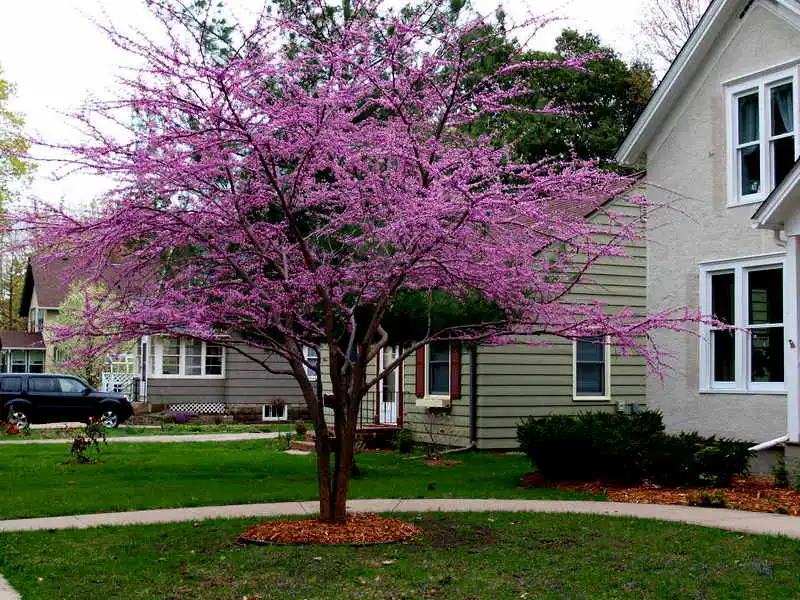
- They typically grow up to 30 feet tall.
- Redbuds can tolerate a wide variety of soil conditions and can even thrive in urban environments.
- They produce vibrant pink-purple flowers in early spring.
- Redbuds are adaptable and can tolerate full sun to partial shade.
- However, they have a relatively short lifespan, typically only living for about 25 years.
Dogwood Trees (Cornus spp.):
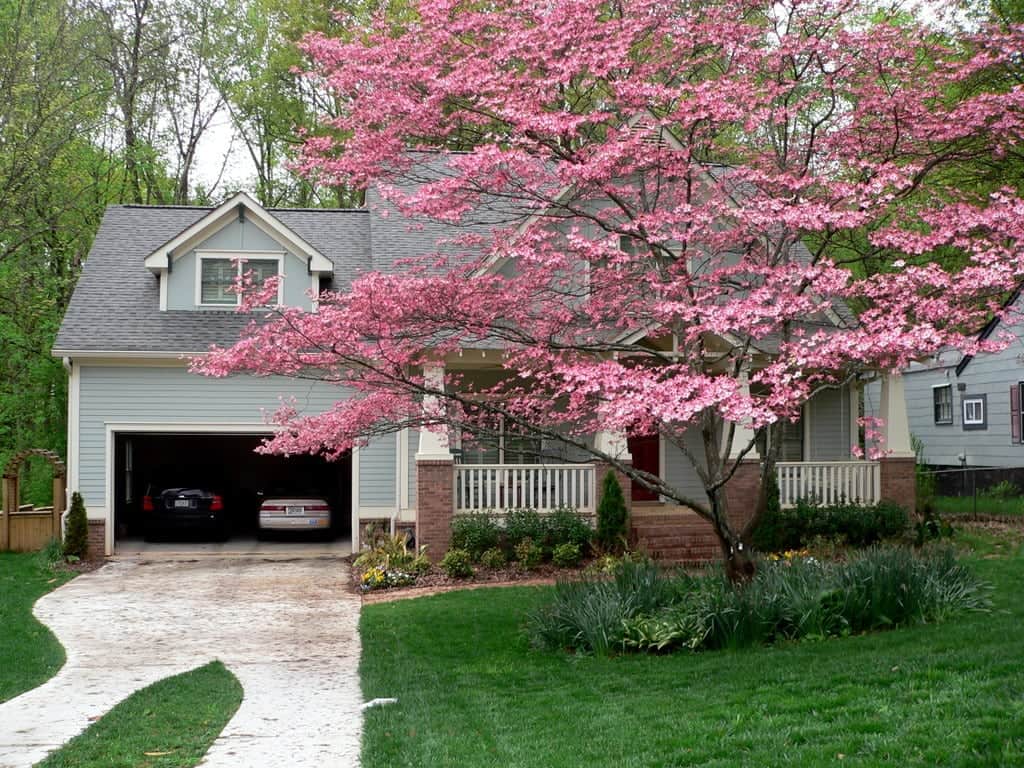
- Dogwoods are similar in size to redbuds, rarely growing over 30 feet tall.
- They are known for their stunning white or pink flowers that bloom in spring.
- Dogwoods prefer a bit of afternoon shade or being an understory tree.
- They are more susceptible to diseases like anthracnose.
- Dogwoods have a significantly longer lifespan than redbuds, enduring up to three times as long.
If you have limited space and need a tree that can tolerate a variety of conditions, a redbud might be a better choice. On the other hand, if you’re looking for a tree with a longer lifespan and stunning white or pink blossoms, a dogwood may be the way to go.
>> Click here to read our in-depth guide on Dogwood Trees
Where to Buy Redbud Tree?
- Lowe’s
- Arbor Day Shop
- Home Depot
- The Tree Center
- Nature Hills
- Spring Hill Nurseries
- Fast Growing Trees
- Planting Tree
- Ty Ty Nursery
- Amazon
Frequently Asked Questions
1. What Is the Average Lifespan of a Redbud Tree?
The average lifespan of Redbud trees is approximately 20 to 30 years, but they can live longer with optimal care and conditions. Their lifespan can be influenced by several factors including the tree’s environment, soil conditions, climate, and resistance to diseases and pests. It’s important to note that redbud trees are relatively short-lived compared to other types of trees.
2. Is it possible to grow a Redbud Tree indoors?
Yes, it is possible to grow a Redbud tree indoors, particularly in a container, but it comes with certain challenges. Redbud trees can reach 20 to 30 feet at maturity when planted outdoors, but they can be kept to a much smaller size as a container plant. However, they will require specific care and attention.
Redbud trees need well-drained soil and plenty of light. If it’s grown indoors, it should be placed near a window that gets plenty of sunlight. It’s also important to note that Redbud trees are deciduous and temperate, meaning they may not survive winter indoors. Some gardeners recommend moving the tree to a cold/unheated basement in the winter once leaves have fallen, similar to the practices used in bonsai cultivation.
While it’s feasible to start a Redbud tree from seedlings indoors, they are more likely to survive if you move them to individual pots after they’ve begun to grow. It’s also crucial to understand that if a Redbud tree sends down a long taproot, it may not do well long-term in a pot.
3. How fast does Eastern Redbud grow?
The Eastern Redbud can grow quite rapidly under favorable conditions, but the growth rate can vary. When young, redbuds can grow quickly, at a rate of 4 to 6 feet per year. After this initial growth phase, they generally have a medium growth rate of about 7 to 10 feet over 5 to 6 years. In full sun, it can grow 2 feet or more per year. However, some trees may not show significant growth for a period, even if they appear healthy.
Keep in mind that these figures can vary based on factors like soil quality, sunlight exposure, and the level of care the tree receives.
4. Should I Be Concerned When I Notice My Eastern Redbud Leaves Turning Yellow?
Yellow leaves on an Eastern Redbud tree could be a sign of several potential issues, and it is a cause for concern as it usually indicates that the tree is under stress.
Here are 4 possible reasons:
- Watering issues: Both overwatering and underwatering can lead to yellow leaves. Redbuds prefer well-drained soil and can suffer from root rot if they’re overwatered. On the other hand, if the tree doesn’t get enough water, especially during dry spells, the leaves may also turn yellow.
- Nutrient Deficiency: A lack of certain nutrients, particularly nitrogen, can cause leaves to yellow. This can often be corrected with a balanced slow-release fertilizer.
- Disease or Pests: Certain diseases like Verticillium wilt or pests like scales and aphids can cause yellowing leaves. If you suspect a disease or pest problem, you may need to consult with a local extension service or a professional arborist.
- Environmental Stress: This can include things like transplant shock, extreme temperatures, poor soil conditions, or damage to the roots.
If you notice yellow leaves, it’s important to diagnose the problem accurately to provide the correct treatment.
You should monitor watering habits, check the soil condition, and look for signs of pests or diseases. If the problem persists, consider reaching out to a local extension service or hiring a professional arborist for help.
Also read:

